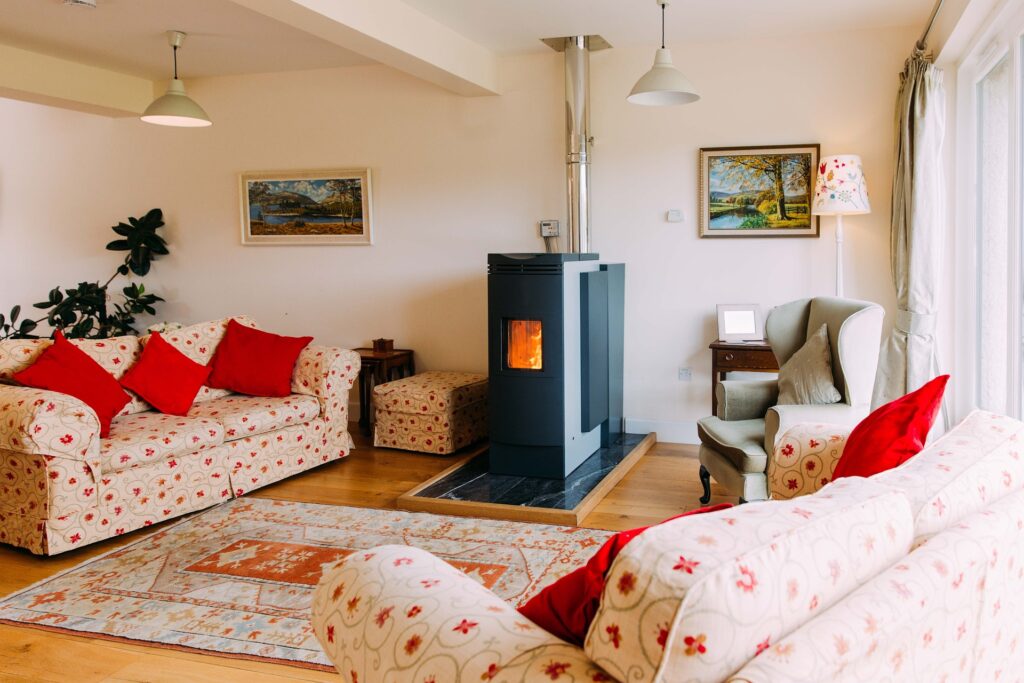Can you replace a gas fire with a wood burner

Are you tired of your gas fireplace and looking for a change? Have you considered upgrading to a cozy wood burning stove? Not only can it add warmth and comfort to your home, but it also offers a rustic aesthetic that cannot be replicated by gas fires. But before you make the switch, there are some important factors to consider. In this blog post, we’ll discuss how to replace a gas fireplace with a wood burning stove, the benefits and disadvantages of making the transition, and how to choose the right stove for your home. So sit back, grab a cup of cocoa, and let’s dive in!
How to replace a gas fireplace with a wood burning stove
Replacing a gas fireplace with a wood burning stove requires careful planning and preparation. The first step is to turn off the gas supply and disconnect the existing fireplace. After that, you need to remove any venting pipes or chimney liners associated with the old system.
The next step is to prepare your installation site for the new wood burning stove. This includes ensuring proper ventilation through an existing chimney or by installing a new one if necessary. It’s important to follow all local building codes and regulations during this process.
Once your site is ready, it’s time to install the wood burning stove itself. This involves attaching any necessary flue piping and sealing around the appliance using high-temperature sealant. You may also need to install a hearth pad under your stove for added safety measures.
After installation, properly seasoning your firewood before use can help reduce creosote buildup in your flue over time. Regular cleaning of both the interior and exterior components of your wood burning stove will also ensure safe operation for years to come.
Replacing a gas fireplace with a wood burning stove can be done successfully with careful planning, professional installation assistance if needed, and regular maintenance as recommended by manufacturers’ guidelines.
The benefits of a wood burning stove
A wood burning stove can be a great addition to any home, not just for its warmth but also for its aesthetic appeal. Here are some of the benefits of having a wood burning stove:
1. Cost-effective: Unlike gas fireplaces that require constant supply and refilling of propane tanks or natural gas lines, a wood burning stove only requires logs as fuel, which is much cheaper.
2. Environmentally friendly: Wood is a renewable resource and when burned properly in an efficient wood-burning stove, it emits less harmful pollutants than other forms of heating.
3. Energy-efficient: A well-designed wood burner can provide more heat with less fuel compared to traditional fireplaces or older stoves.
4. Control over heating levels: With proper ventilation and control settings on your stove, you can easily regulate the amount of heat generated by your unit based on your preferences.
5. Cozy ambiance: Nothing beats the cozy atmosphere created by the crackling sound and warm glow produced by a real fire – perfect for snuggling up during cold winter nights!
Investing in a quality wood burning stove not only provides warmth but also cost savings while reducing environmental impact – making it an excellent choice for many homes!
The disadvantages of a wood burning stove
While there are many benefits to owning a wood burning stove, it’s essential to consider the disadvantages before replacing your gas fireplace.
Firstly, wood burning stoves require a significant amount of maintenance and cleaning. The ashes need to be removed regularly, and the chimney must be cleaned annually. Failure to do so can lead to blockages or even fires.
Secondly, installing a wood burning stove is not always straightforward. It requires proper ventilation and safety measures such as fireproof flooring or walls. The installation process can also be costly depending on the type of stove you choose.
Another disadvantage is that wood-burning stoves produce smoke which may cause health problems for individuals with respiratory issues. In addition, they contribute significantly more pollutants than natural gas heating systems.
Finding dry firewood can also pose challenges during certain times of the year or in specific areas. Wet or unseasoned wood will burn less efficiently and emit more toxins into the air.
While there are some downsides associated with switching from a gas fireplace to a wood-burning stove, many find that the benefits outweigh any potential drawbacks if maintained correctly and used responsibly.
How to choose the right wood burning stove
Choosing the right wood burning stove can be a daunting task, but it doesn’t have to be. First and foremost, you need to consider the size of your room as this will determine the heat output required from your stove. A small room may only require a stove with an output of 4-5kW, while larger spaces may need up to 12kW.
It’s also important to choose a style that complements your home decor. From traditional cast iron designs to more modern steel finishes, there are plenty of options available on the market today. Additionally, make sure you select a model with good ventilation and air controls for maximum efficiency and safety.
When selecting a wood burning stove, think about what type of fuel you’ll use. Some stoves burn only one type of wood while others are multifuel stoves capable of burning both logs and coal. Consider which is most readily available in your area and which fits within your budget.
Always look for quality construction when choosing a wood burner. The best stoves will come with warranties that cover parts and labour so if anything goes wrong; you’re covered financially. With all these factors in mind, selecting the right wood burning stove for your home should become an easier process!
Conclusion
Replacing a gas fireplace with a wood burning stove can be a great decision for many reasons. Not only does it add warmth and ambiance to your home, but it can also save you money on heating costs and reduce your carbon footprint.
Before making the switch, be sure to consider all of the factors involved such as cost, installation requirements, maintenance needs, and safety concerns.
If you decide that a wood burning stove is right for you, take some time to research and choose the best one for your home based on size, style, efficiency ratings and other features.
Replacing a gas fire with a wood burner is definitely possible. It just requires careful planning and consideration in order to ensure that you make an informed decision that will meet both your practical needs as well as bring joy into your life.
